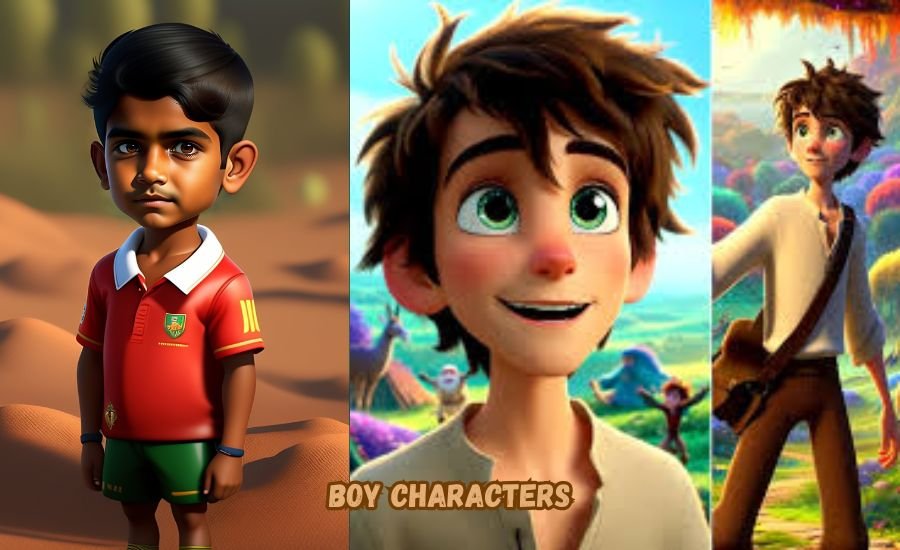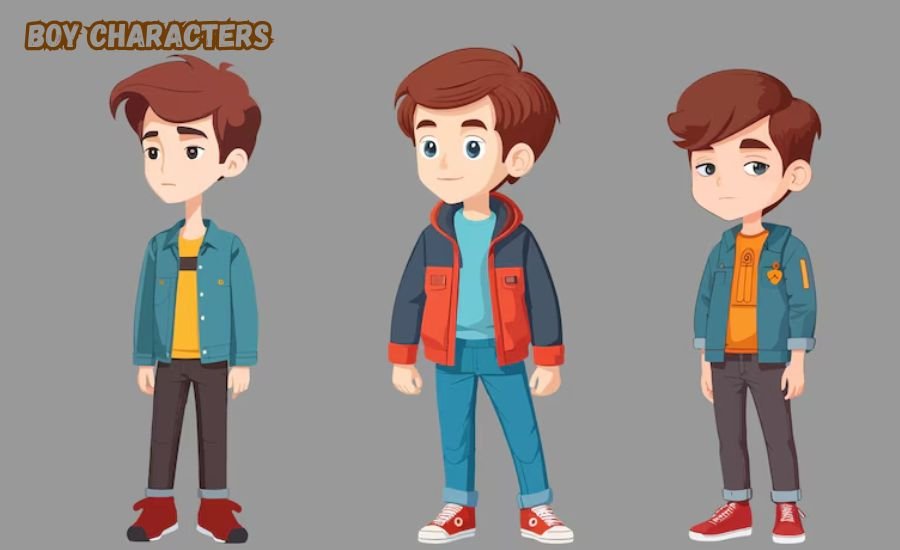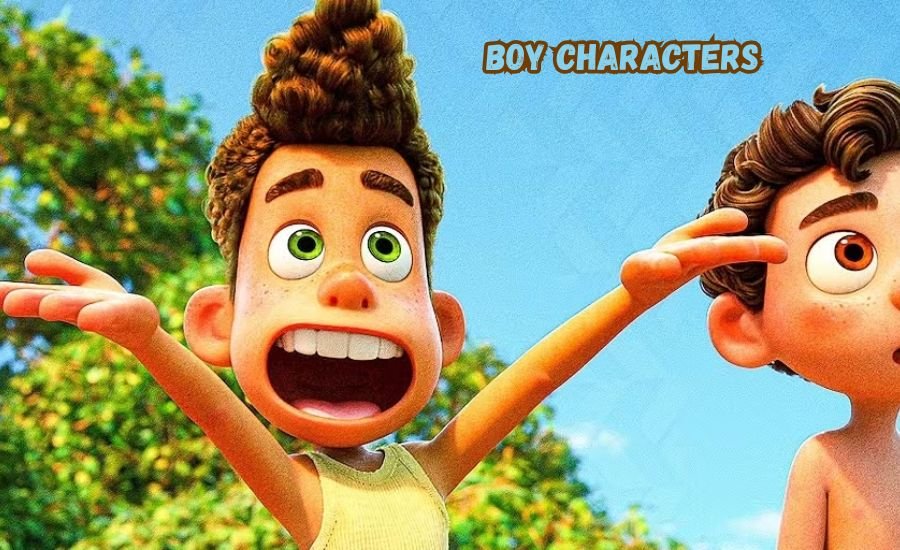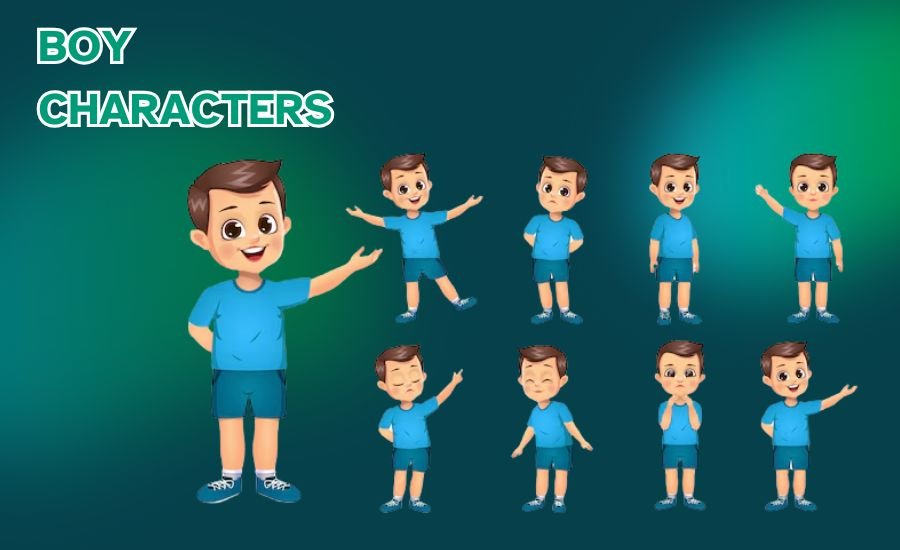Boy characters have played an invaluable role in literature, cinema, and TV for decades. Heroic heroes such as Marcus from About a Boy and Hughie from The Boys depict courage, growth, and change throughout their narratives.
Boy characters are more than just fictional roles; they represent real-life struggles, dreams, and emotions. Some fight against evil, while others deal with everyday life challenges. This article explores the most influential boy cartoon characters, their evolution in storytelling, and how they connect with people worldwide.
Boy Characters in Literature vs. Film – How Their Impact Differs
Books and movies tell stories differently. Literature allows deep character exploration, while films bring characters to life visually. Some boy characters remain true to their book versions, while others change drastically when adapted to the screen.
Movies often simplify characters to fit time limits. While a book can give readers insight into a boy’s thoughts and emotions, films rely on actions and expressions to show personality. This difference can sometimes change how audiences perceive a character.
In some cases, adaptations make characters more engaging. A well-acted performance can add layers to a role. However, some films fail to capture the depth found in books. Understanding these differences helps us appreciate the unique impact of each medium.
The Most Iconic Boy Characters in Modern Pop Culture

1. Brave and Heroic Boy Characters
Some boy cartoon characters stand out because of their bravery. Heroes take on challenges, stand up to villains, and protect others – inspiring audiences with their courage and perseverance.
2. Intelligent and Strategic Boy Characters
Some boy characters are known for their intelligence rather than physical strength. They solve complex problems, outsmart opponents, and use their minds to succeed.
3. Misfit and Underdog Boy Characters
These characters may seem outcasts at first, yet their journey makes them unforgettable. Their persistence resonates powerfully with audiences despite struggles within school, friendships, or family – their perseverance will resonate long with audiences watching!
4. Dark and Mysterious Boy Characters
Some boy cartoon characters have a mysterious past or a troubled personality. Their depth and struggles make them intriguing and memorable in pop culture.
Why Boy Characters Resonate with Audiences of All Ages
Stories featuring boy characters often explore universal themes. They deal with friendship, loss, courage, and identity. These themes make them relatable to both young and adult audiences.
Many boy cartoon characters experience personal growth. From childhood innocence to teenage struggles, their journeys feel real. People see parts of themselves in these stories, creating a deep emotional bond.
Older audiences appreciate nostalgia in these characters. They remind them of their past, lessons learned, and dreams pursued. This connection makes these roles timeless and beloved by different generations.
The Evolution of Boy Characters in Fiction Over the Decades

Boy characters have changed significantly over time. Early literature often portrayed them as innocent and adventurous, while classic tales like Tom Sawyer focused on mischief and fun.
Modern stories give boy characters more depth. They now face complex emotions, struggles, and personal challenges. This change reflects changing societal views on childhood and adolescence; today’s stories feature characters representing more diverse backgrounds and cultures in order to reach wider audiences with stories they can connect to more easily.
The Role of Boy Characters in Coming-of-Age Stories
Coming-of-age stories focus on personal transformation. Boys featured in these stories often face real-life challenges and learn valuable lessons along their path to adulthood.
Books such as The Catcher in the Rye explore teenage rebellion and emotions, while films such as Stand by Me demonstrate friendship and adventure as they document the transition from childhood into adulthood.
Such characters teach essential life lessons. They remind audiences about the joys and pains of growing up, and their journeys inspire readers and viewers to embrace change and self-acceptance.
Complex vs. Simple Boy Characters – What Makes Them Memorable?
Aspect Complex Boy Characters Simple boy cartoon characters:
Personality Multi-layered, deep emotions, and evolving traits Straightforward, predictable, and static traits
Character Growth Undergo significant development and personal struggles Minimal change, often staying the same
Backstory Detailed, with personal challenges and motivations Basic, often with little background depth
Emotional Depth Show conflicting emotions and internal dilemmas Limited emotional complexity
Role in Story Drive the plot with their decisions, and changes Support the Story without much influence
Memorability Stand out due to their complexity and relatability Memorable for their simplicity and charm
Examples Marcus (About a Boy), Hughie Campbell (The Boys), Nicky (About a Boy), Basic side characters
This comparison helps highlight what makes certain boy characters more impactful and engaging in stories.
Boy Characters Who Challenge Stereotypes in Media
Traditional stories expect boys to portray tough, brave characters, but modern tales have challenged these expectations by featuring more diverse, real, and varied personalities for boy cartoon characters.
Charlie from The Perks of Being a Wallflower displays emotional vulnerability. He grapples with mental health issues and personal growth – breaking with stereotypes of fearless heroes.
These characters help redefine masculinity. They show that boys can be sensitive, intelligent, and kind. Breaking stereotypes makes stories more relatable and inclusive for different audiences.
I Hope You’re Interested: Britney Spears Vegas
How Real-Life Events Shape the Creation of Boy Characters

Many boy characters are inspired by real-life events and experiences. Writers often create characters based on themselves or historical moments from their childhood or adulthood. For instance, in To Kill a Mockingbird, Scout and Jem Finch reflect racial tensions in 1930s America. Their experiences highlight social issues while keeping a child’s perspective.
Real-life influences make characters more authentic. They help stories feel genuine, allowing readers and viewers to connect with them on a deeper level.
The Psychological Depth of Boy Characters in Drama & Thrillers
Some stories explore deep psychological themes through book characters for boys. These characters deal with fear, trauma, or ethical dilemmas, making them intriguing and intense.
For example, Room features a boy raised in captivity, struggling with freedom and reality. Another example is The Sixth Sense, where a child communicates with spirits. Their experiences add suspense and depth to the storytelling.
These characters show resilience and intelligence. They make audiences think, feel, and question reality, adding layers to the Story’s impact.
Underrated Boy Characters Who Deserve More Recognition
Some boy characters remain unnoticed despite their strong influence. But their achievements don’t receive the credit they deserve.
Stanley Yelnats from Holes is one of many characters who persevere despite injustice; similarly, August Pullman from Wonder promoted kindness and self-acceptance among children as part of teaching them virtue.
These underappreciated roles deserve greater appreciation; their tales can uphold and motivate in equal measure with those of more prominent figures.
Conclusion
Boy characters play an invaluable part in storytelling. Their emotions, struggles, and goals make them accessible to audiences around the globe. Their impact continues to grow, from classic literature to modern films.
Understanding their significance helps one appreciate the power of storytelling. Whether it’s courageous, sensitive, or rebellious characters, their adventures leave an indelible mark that inspires, amuses, and shapes the way stories are told.
Book characters for boys will always be a central part of literature and film. Their influence goes beyond fiction, reflecting real-life emotions and experiences. Their legacy continues to shape narratives for future generations.
FAQs
Q: What makes boy characters stand out in a story?
A: Boy characters often stand out due to their unique personalities, growth arcs, and emotional depth, making them relatable and engaging.
Q: How do authors create realistic boy characters?
A: Authors develop realistic book characters for boys by giving them relatable traits, personal struggles, and meaningful relationships within the Story.
Q: What are some common traits of strong boy characters?
A: Strong boy characters often display courage, resilience, curiosity, and a willingness to grow through challenges.
Q: How do boy characters influence a story’s theme?
A: Book characters for boys help shape a story’s theme by driving the plot, learning life lessons, and reflecting key messages through their experiences.
Q: Why are boy characters important in literature and media?
A: They provide representation, inspire young readers, and bring depth to stories by showcasing different perspectives and struggles.
Q: What genres commonly feature boy characters?
A: Boys’ characters often feature prominently in adventure, fantasy, coming-of-age stories, and drama that depict their experiences and growth throughout.
Stay In Touch To Get More Updates On Rizz Lines
